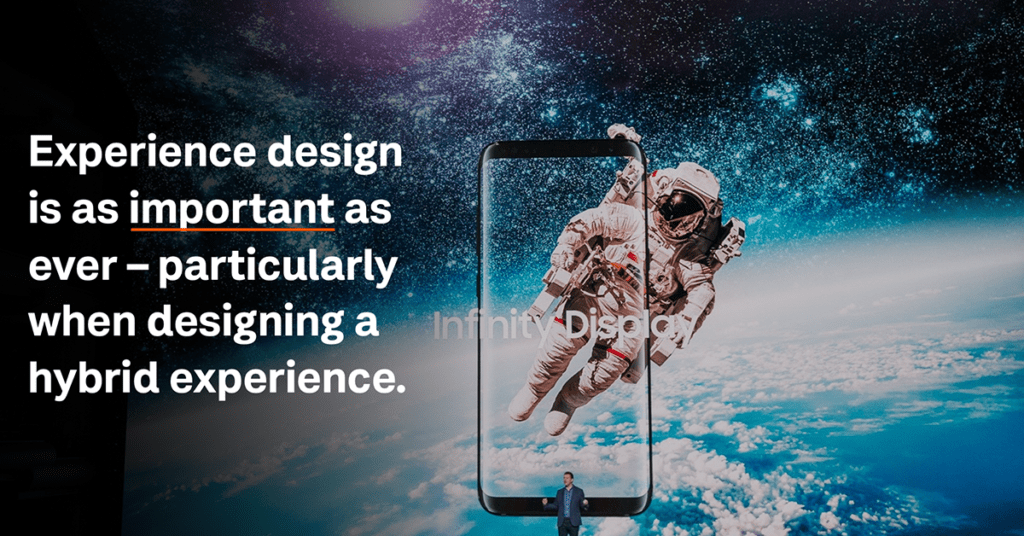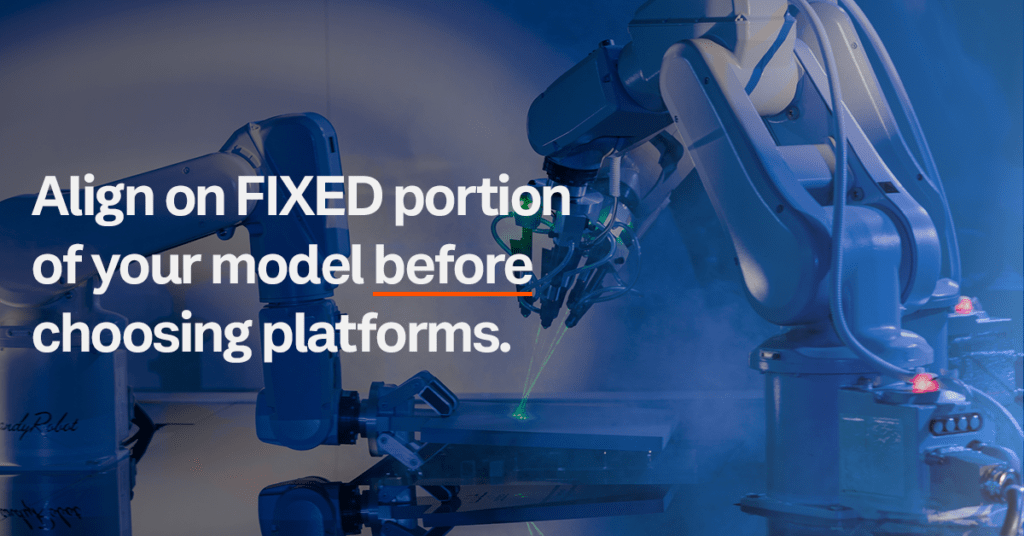Jack Blog
November 17th, 2020
It’s not a newsflash. The way to deliver brand experiences has been rocked by COVID. Live has been temporarily displaced by virtual, and as we move forward through the waves of the pandemic, over the next 12 months we’ll see small semblances of it return in the form of ‘hybrid’ experiences.
But first, let’s go back in time a bit.
In the early days of the pandemic, brands took what was planned for live and swiftly turned it virtual to ‘get things done.’ The outputs were inconsistent. Why? Because the quick flip from live to virtual didn’t allow for the planning that is put into delivering a compelling experience. (Like the audience’s journey.) And at times, it showed.
Virtual, though varied in its delivery, isn’t going away. And as we move into 2021, variables (cultural, geographical and health-related) will continue to play a large role. As restrictions for gathering in physical locations lift, hybrid is likely to emerge as the way to design and host experiences – featuring elements of live, combined with mostly virtual. Nimble, easily deployed hybrid experiences will be developed to respond in-step as social closeness and comfort levels rise. These will vary by market and by age cohort. Rapid testing and the availability of a vaccine may accelerate the roadmap as well. As a result, brands will need to develop adaptable plans and invest in scenario planning. Activation preparedness will also be key. In short, brands will need to embrace a fixed yet flexible planning model.
What to expect down the road
As we move into the latter months of 2021, expect to see more demand for live. But most, if not all, will have some sort of hybrid component.
Perceptions around the need to travel or be part of a large crowd have changed. And while many brands are ready to return to live as soon as possible, a large number are forecasting true hybrid experiences as the state of the future – accounting for those who want to be in person and for those who are more comfortable joining from their laptops. This means the “return plan” will look different than it did before the pandemic changed the experience landscape.
So, what have we learned? Here are a few key takeaways for brands – and trends for experience formats:

Experience design will reign. We’ve talked about the fact that virtual and hybrid are here to stay. But one key element to making sure those experiences are impactful is the experience design, which will become more important than ever. Brands must create experiences that ensures every participant, regardless of location or environment, has an amazing and equal experience. They will need to strategically combine polished prerecorded presentations with live and inherently digital and live interactive elements to keep the experience fresh. Those that require live and virtual audiences to work together, in real time, as if they were face to face will be more prevalent. We are already seeing some of this in sports, like the WWE, in bringing their fans into their matches.
Content will make or break your experience. We’ve heard before that content is king. And when it comes to the virtual and hybrid landscape, content will rule. How it’s delivered, where it’s delivered and in what format will all be crucial to building audience journeys. Audiences take in information in different ways, so content audits and the use of multiple platforms for delivery will ensure engagement.
Experiences are becoming more and more like TV or film productions. People’s home offices are giving way to studios and fabricated backdrops, and we’re seeing more brands create in-house custom studios. We’ll see more broadcast quality experiences – more like what people see at home versus at work, which may include “commercial breaks” or “brain breaks” with things like cooking demonstrations at lunch, or short audience inspired videos.
Platforms will remain a hot topic. Brands often ask what platform they should use before deciding what the experience journey is. We suggest the opposite approach. Aligning on audience objectives, KPIs and content will help to determine the best platform to reach your goals and audience. It’s not a one size fits all situation. And a platform can’t stand on its own either. It needs to be coupled with experience design and execution chops to result in a standout virtual experience.

Live events will return in 2021. They just won’t look like they once did. In some form or another, we’ll see them resurface — but only once they can be carefully produced to ensure that people feel (and are) safe, and visibly reassured that their safety is a priority.
Brands will need to follow a playbook to ensure they are delivering on this. Elements like bio-security measures and environmental design principles for social distancing will need to be factored in. Stages will be designed with social distancing in mind. Health screenings, temperature checks, heavy disinfecting of surface areas will all be commonplace. We’re already seeing this in China, which has moved back to live formats. Think touchless experiences using low-touch technologies that enable magical interactivity without being hands-on; applications like eye tracking devices to activate content; gesture like hand-tracking technology that when combined with VR, AR, and device interaction, allows people to feel and manipulate virtual objects without the need for gloves or other wearable and voice activated experience elements.
All of this is our future.